You are not logged in.
- Topics: Active | Unanswered
#26 2014-11-29 20:49:41
- margrit
- Administrator
- Registered: 2007-09-03
- Posts: 5,388
Re: Kalanchoe and others in my collection
Ronen, we need flowers ....
Offline
#27 2014-11-30 07:04:24
- Ronen
- Member
- Registered: 2014-03-25
- Posts: 49
Re: Kalanchoe and others in my collection
It is still not too late for that to happen... I'll keep you posted!
Offline
#28 2014-12-03 19:02:59
- Ronen
- Member
- Registered: 2014-03-25
- Posts: 49
Re: Kalanchoe and others in my collection
Here are some additional photos of clones that prepare to flower:
The regular K. blossfeldiana ("Tom Thumb"):
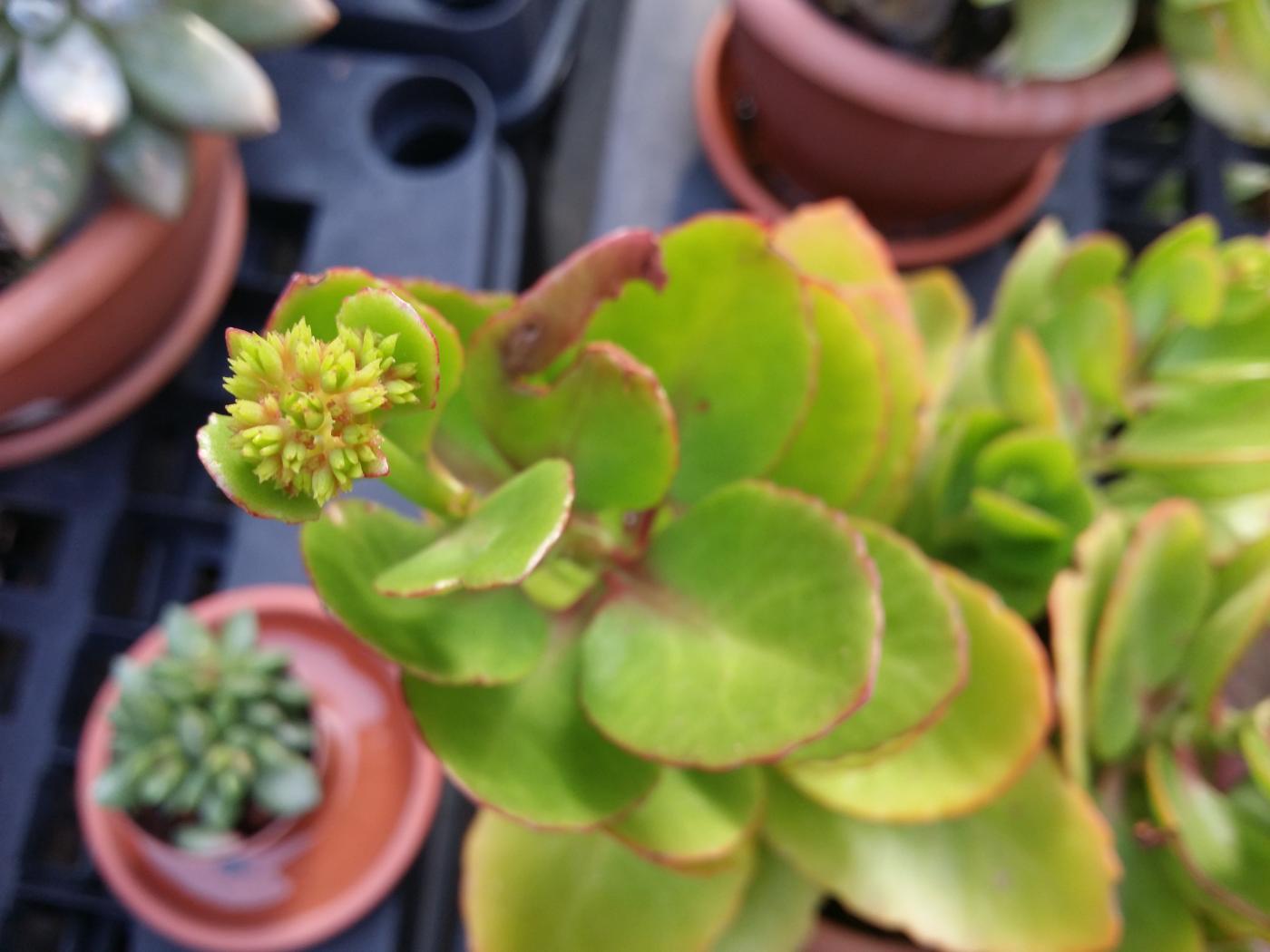
K. waldheimii, apparently considered a delicacy by snails...
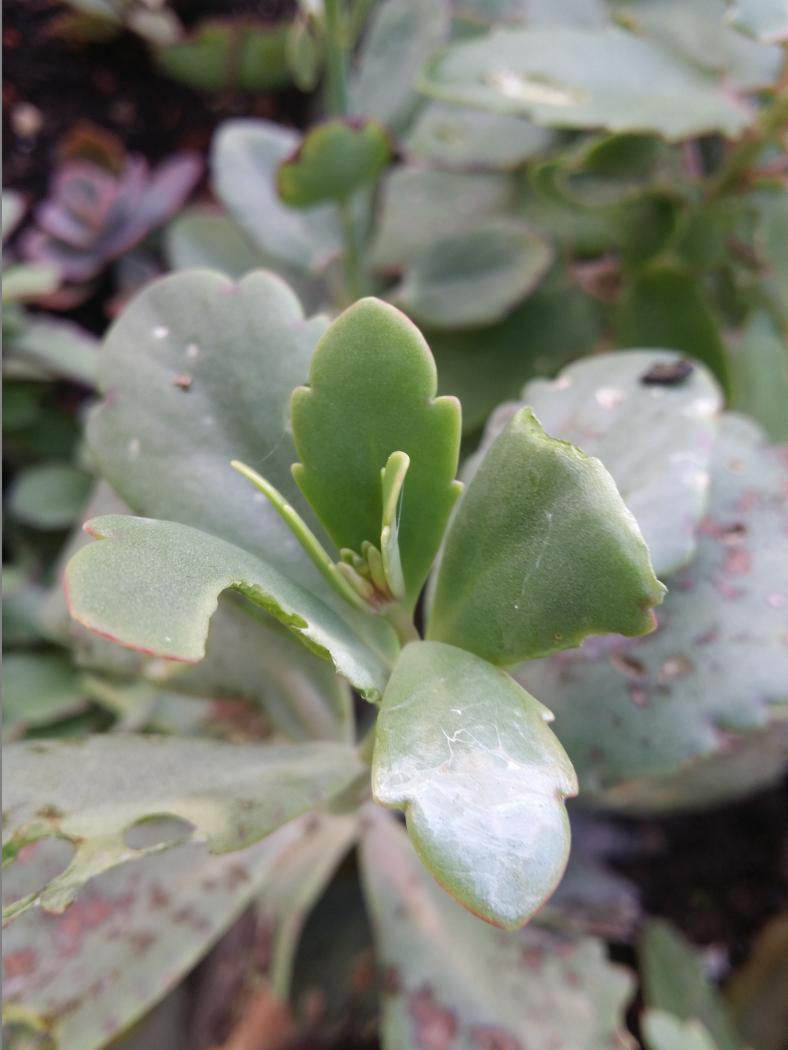
Yet another clone of K. fedtschenkoi, somewhat close to K. waldheimii in size, leaf form, and stature.
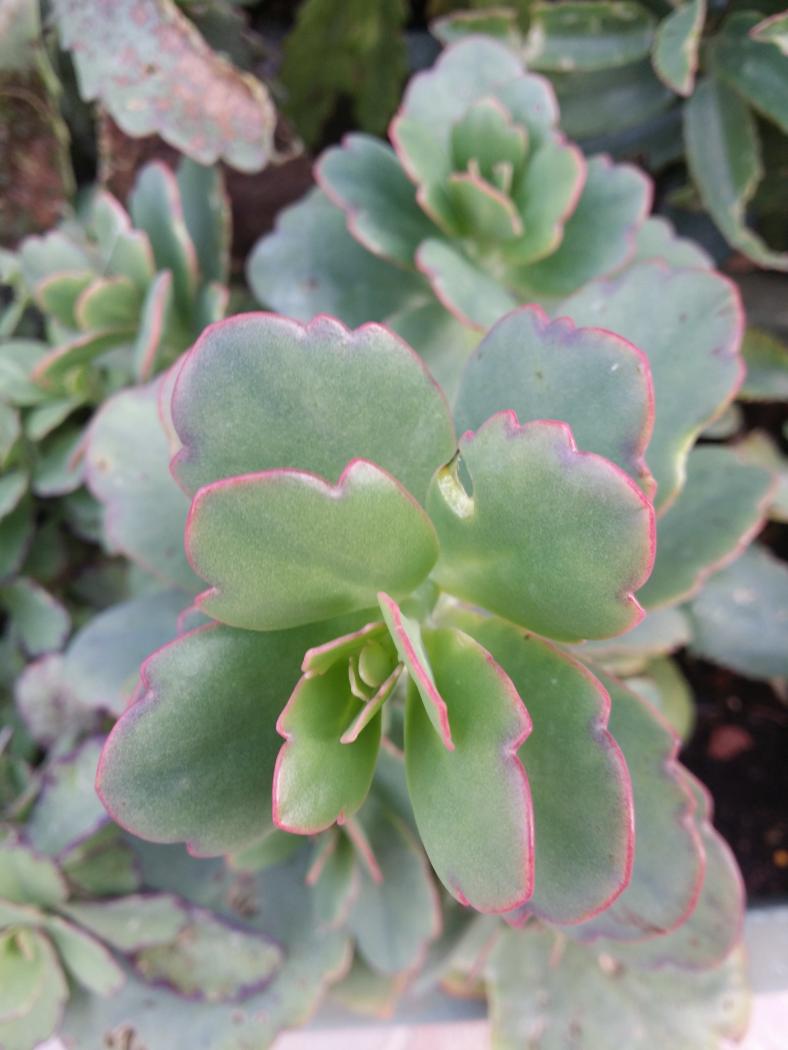
K. rhombopilosa var. rhombopilosa:
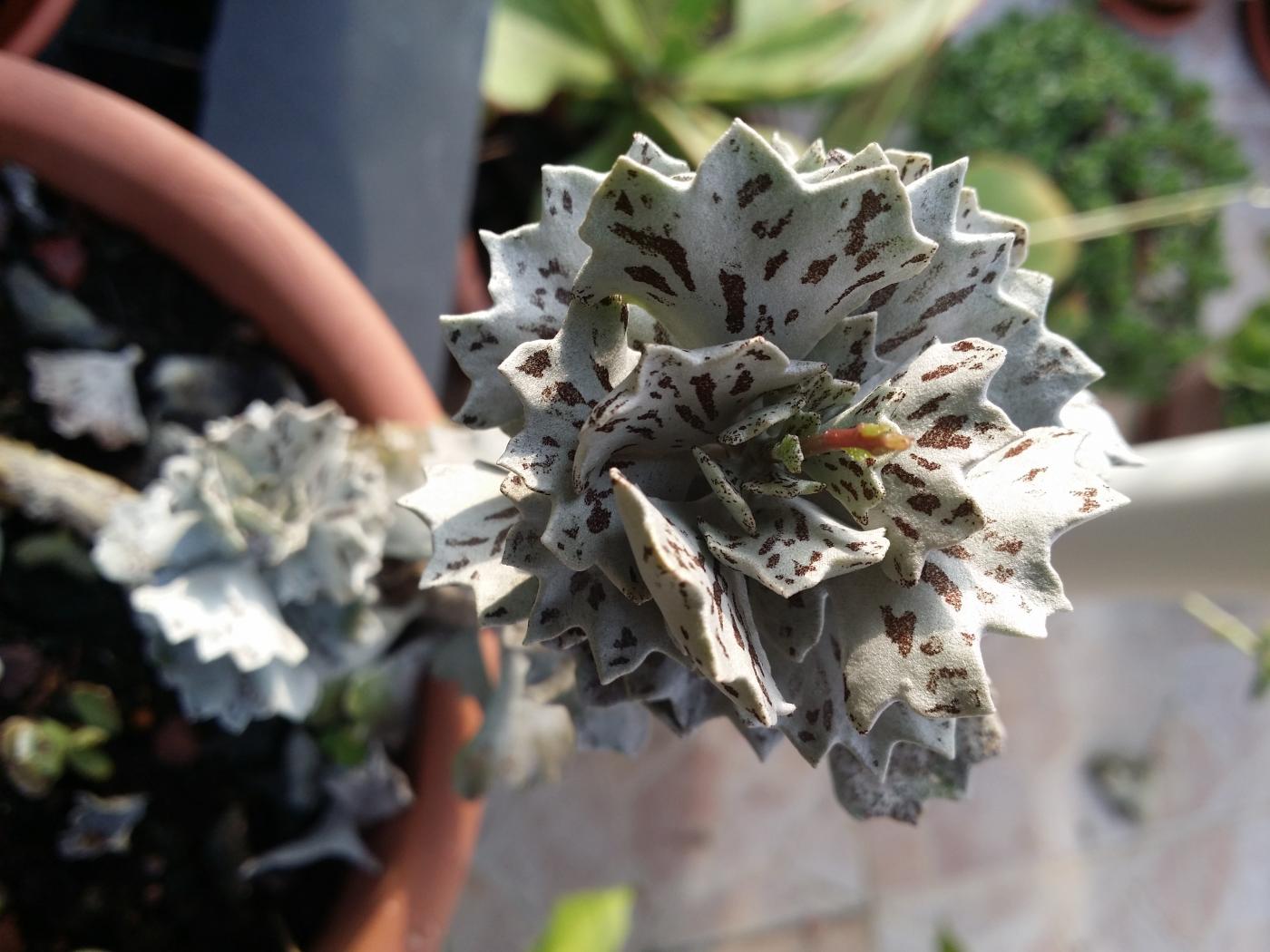
K. lateritia "var. zimbabwensis":
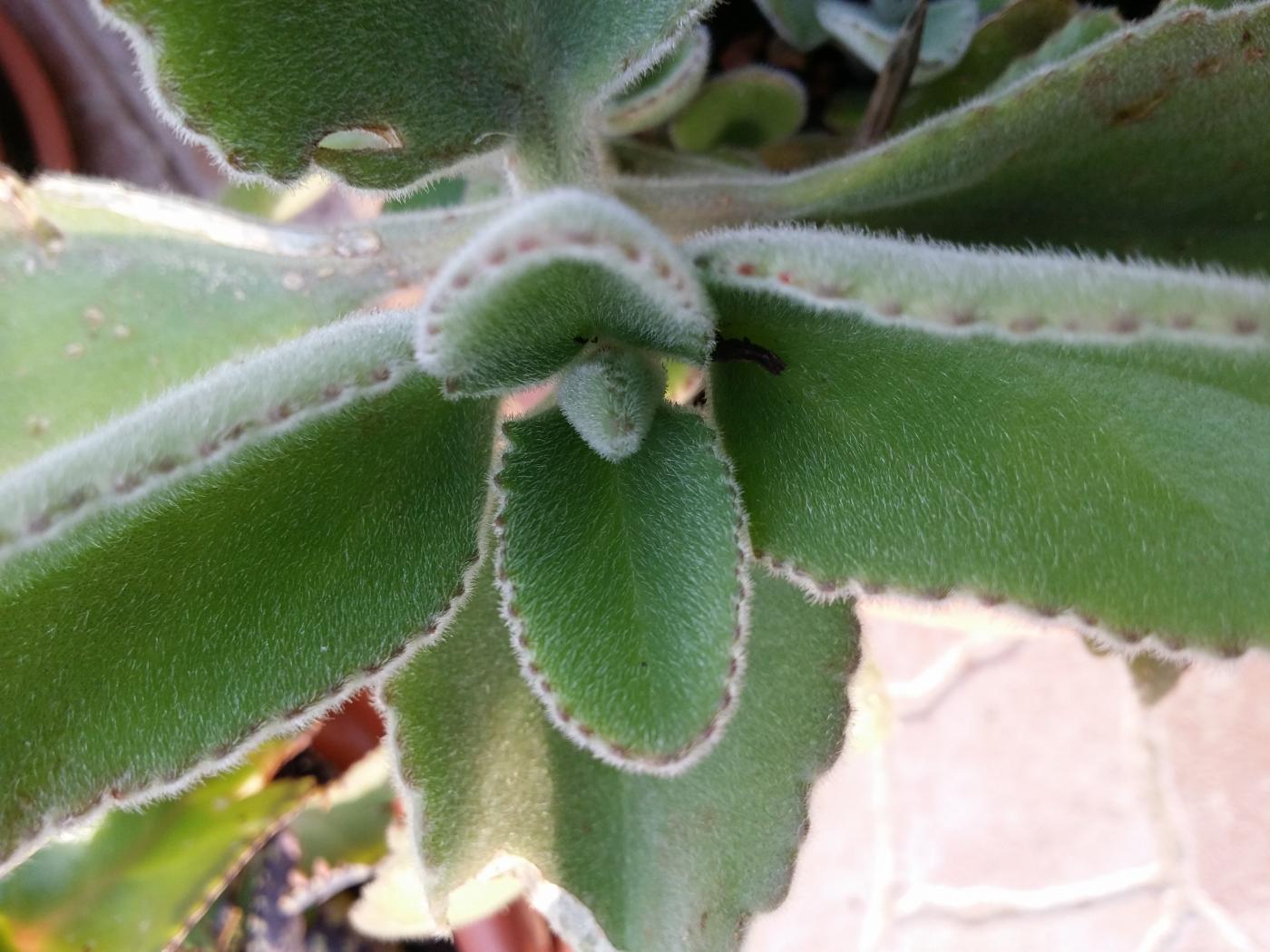
K. miniata:
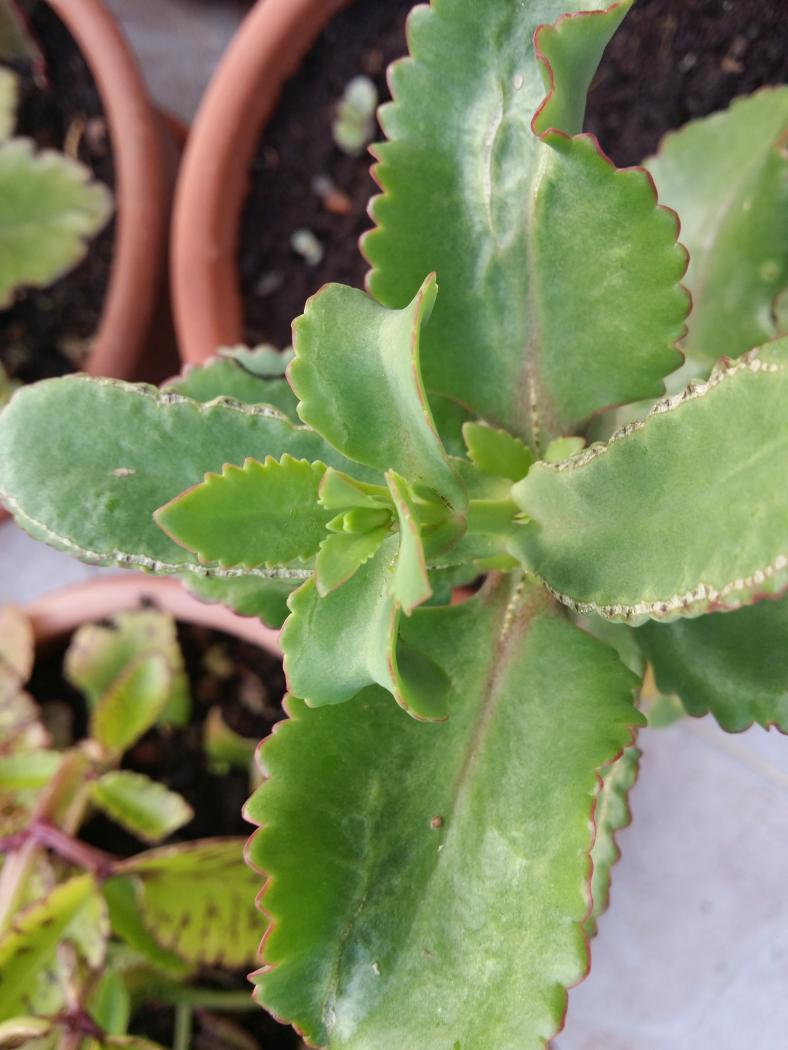
Another clone of K. miniata, very young:
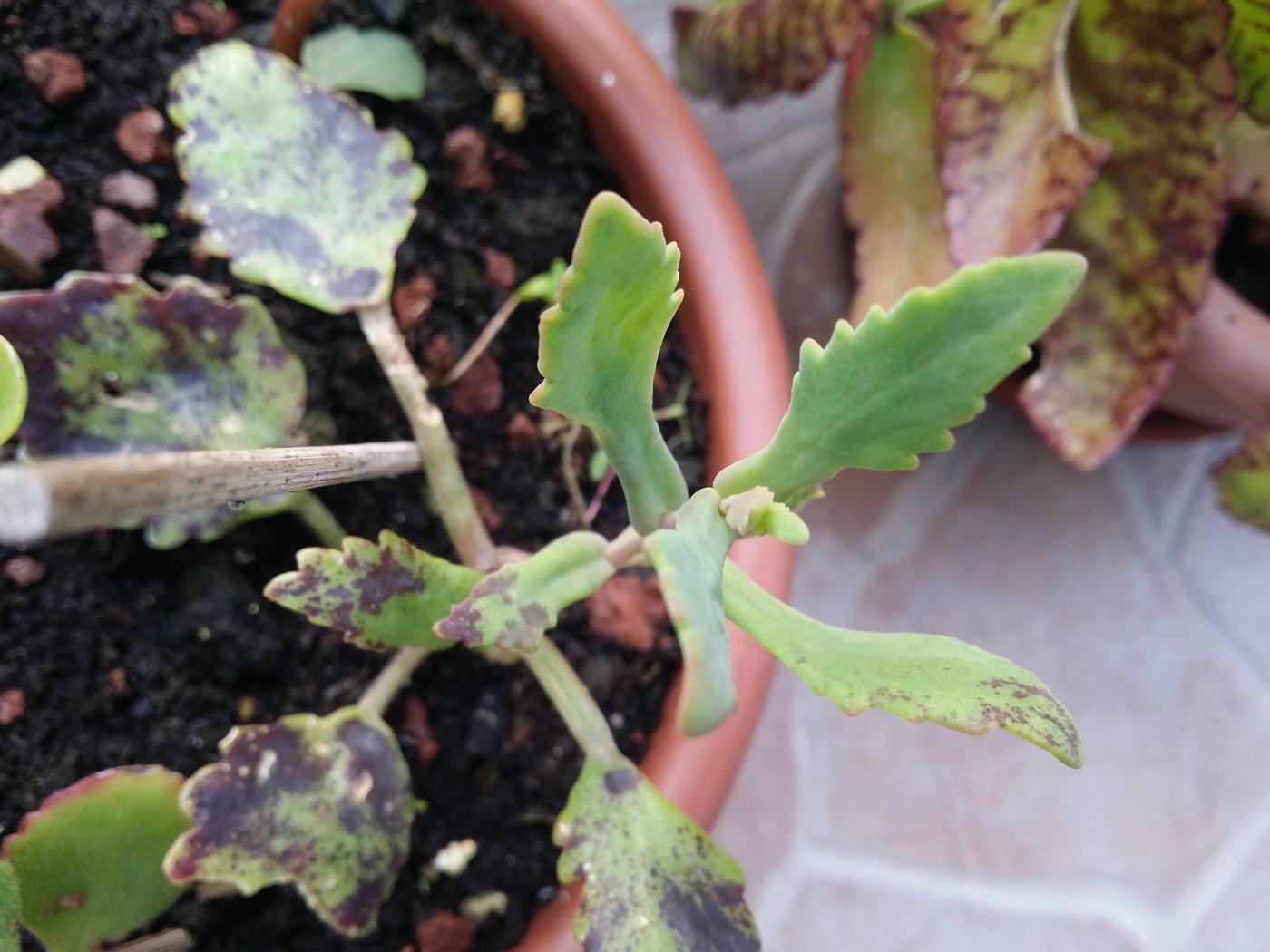
Offline
#29 2014-12-03 21:11:19
- Kalanchoesammler
- Member
- Registered: 2014-11-30
- Posts: 20
Re: Kalanchoe and others in my collection
Thanks for keeping us updated! Wow that K. rhombopilosa looks crazy, much different to the one i have.
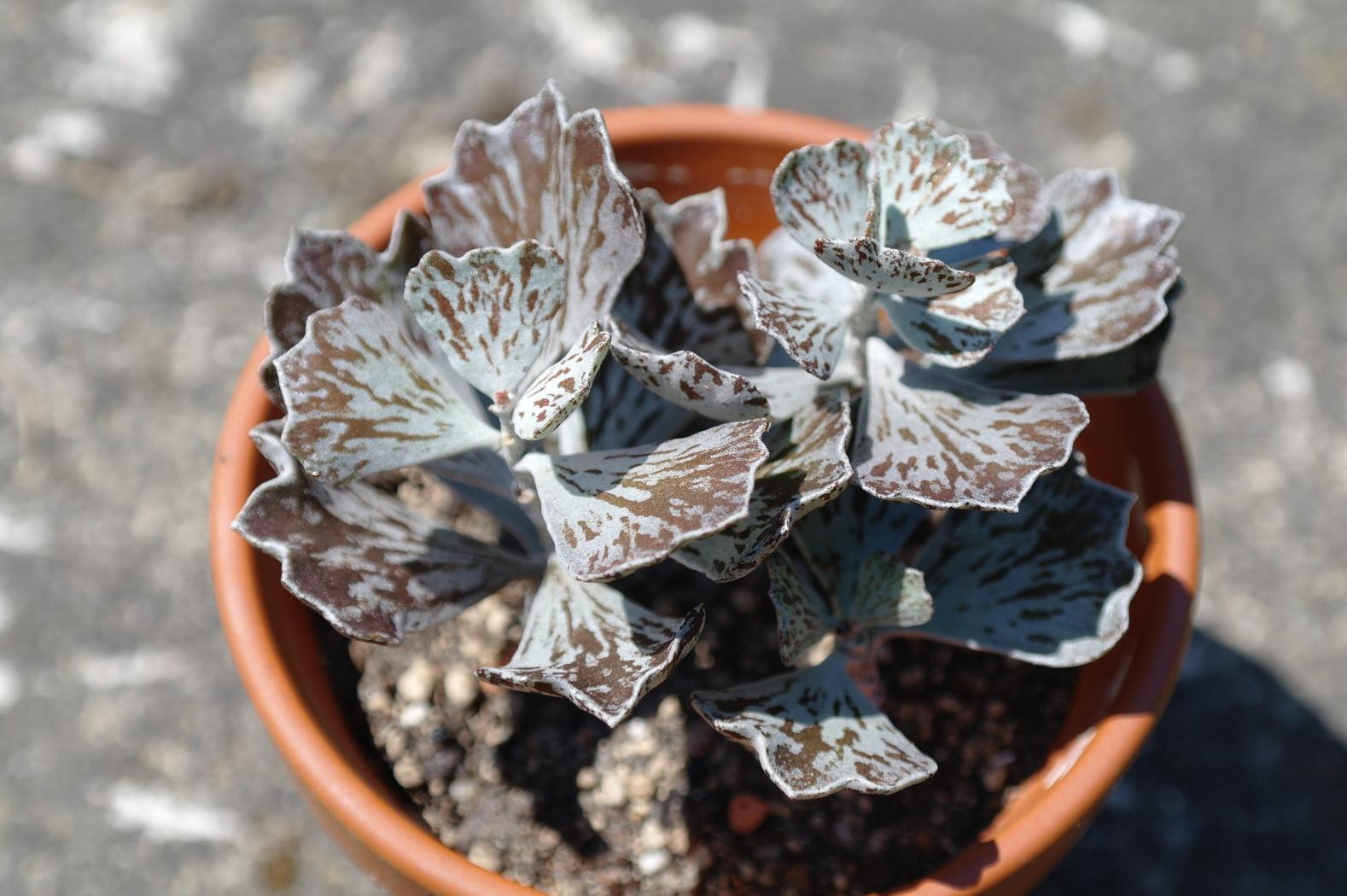
Cheers,
Paul
Offline
#30 2014-12-04 09:46:52
- Tom
- Member

- Registered: 2011-09-08
- Posts: 1,722
Re: Kalanchoe and others in my collection
Wow that K. rhombopilosa looks crazy
I agree with you.
The plant received probably a lot of sun, is it the case, Ronen ?
Offline
#31 2014-12-04 16:01:07
- Ronen
- Member
- Registered: 2014-03-25
- Posts: 49
Re: Kalanchoe and others in my collection
Paul, it seems that our clones also differ significantly in coloration. I initially thought that age might account for this difference, but then I checked my young var. rhombopilosas derived from leaves - they have the same coloration as my mature plant.
Kalanchoesammler wrote:Wow that K. rhombopilosa looks crazy
I agree with you.
The plant received probably a lot of sun, is it the case, Ronen ?
It receives a lot of sun during the summer, but for the past few months it has been shaded by a tree so even when it's sunny, it gets around 2 hours of direct sun... I don't know why my rhombopilosas become so sharp looking - the same happened to my K. rhombopilosa var. viridifolia soon after I got it. Leaves of younger plants are less crazy in shape, however.
Offline
#32 2014-12-05 17:50:04
- Ronen
- Member
- Registered: 2014-03-25
- Posts: 49
Re: Kalanchoe and others in my collection
First opened flowers of K. spathulata var. spathulata, the first form to flower since K. rotundifolia:
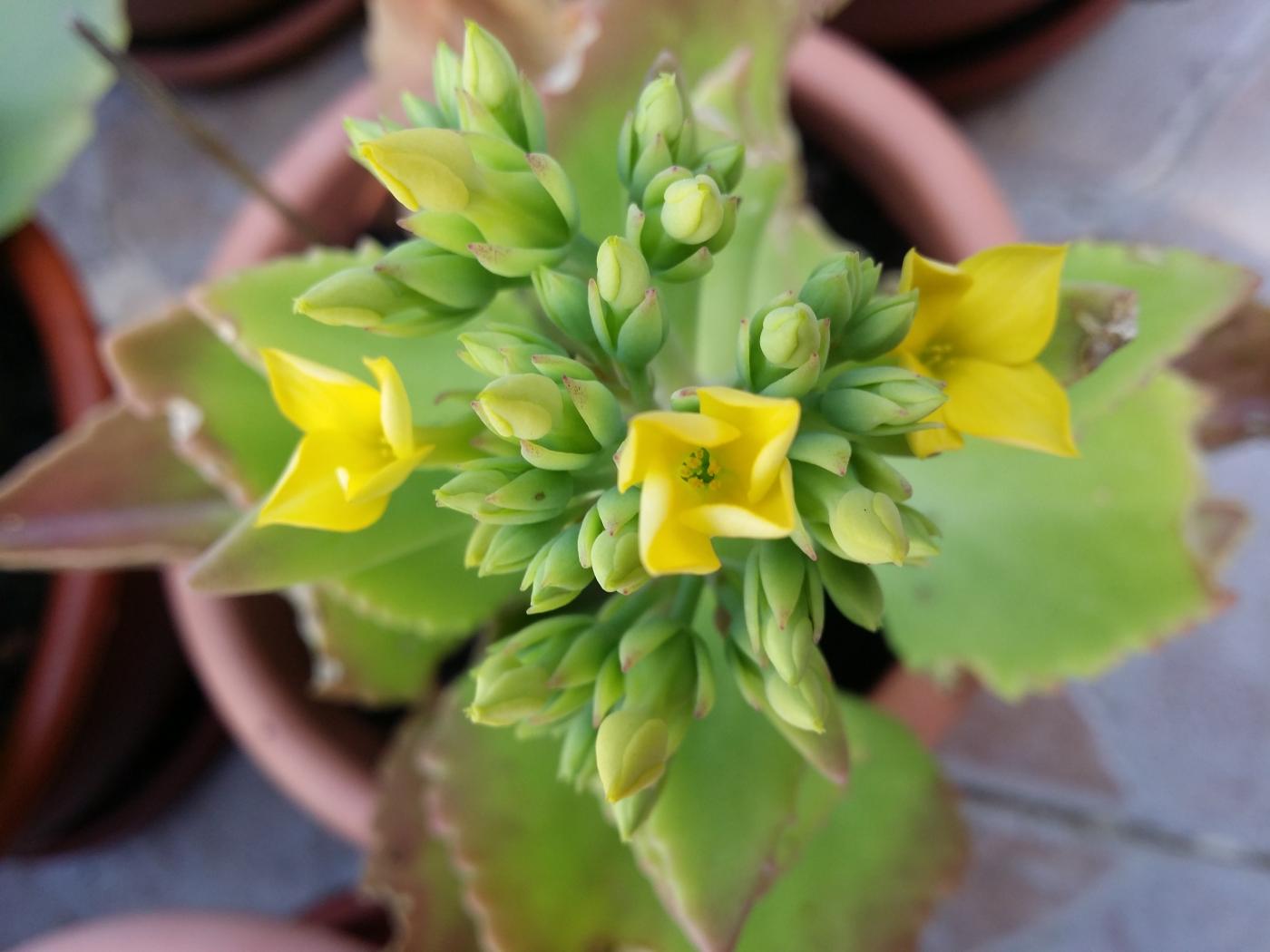
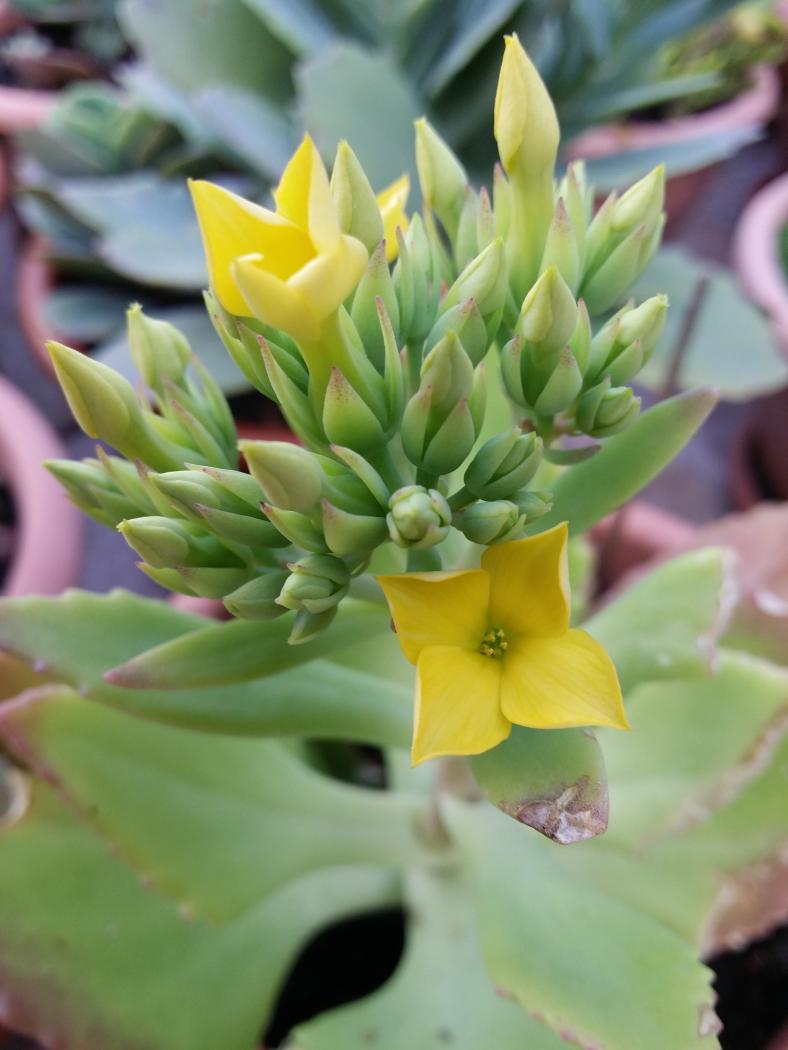
Offline
#33 2014-12-05 22:00:58
- Kalanchoesammler
- Member
- Registered: 2014-11-30
- Posts: 20
Re: Kalanchoe and others in my collection
Really nice! ![]()
Offline
#34 2014-12-07 15:48:06
- Ronen
- Member
- Registered: 2014-03-25
- Posts: 49
Re: Kalanchoe and others in my collection
Really nice!
Thanks!
Here is yet another "surprise", a stolon of my regular K. synsepala, still attached to the mother plant, got a stolon of its own!
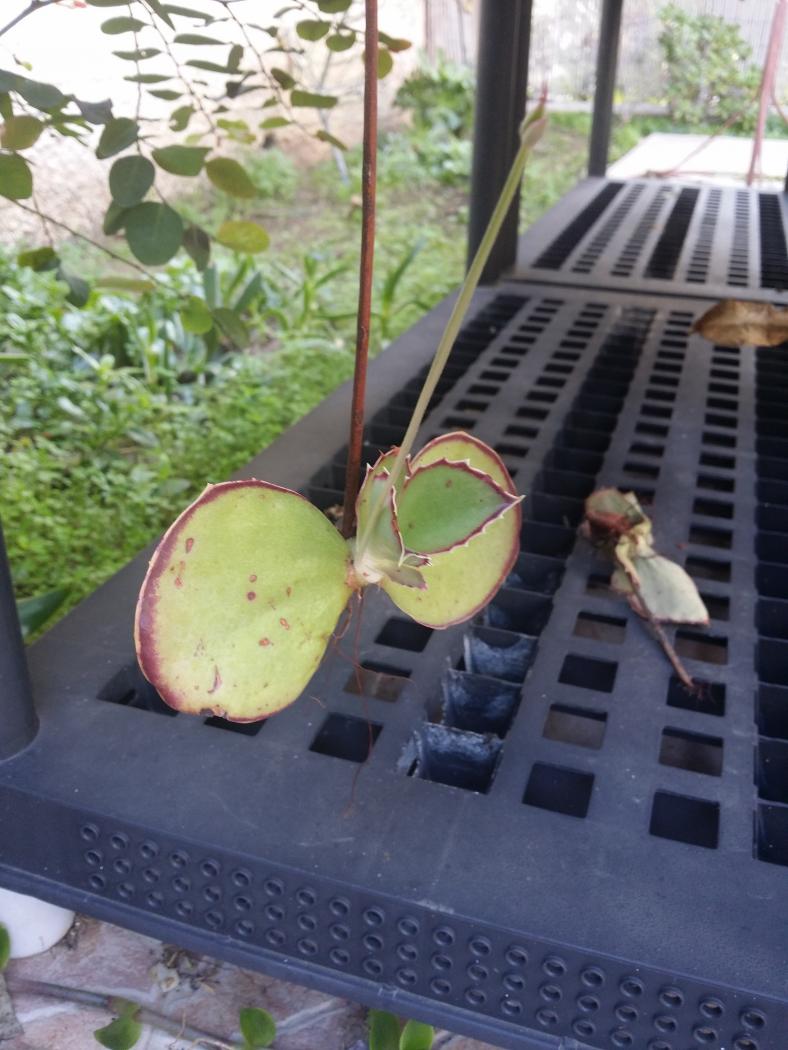
Offline
#35 2014-12-08 18:15:10
- Laurent
- Member

- From: Côte d'Azur
- Registered: 2008-05-04
- Posts: 419
Re: Kalanchoe and others in my collection
Ronen your plants look very healthy.
How did you get such a beautiful and big L. guttatum from a leaf ? Mine doesn't grow that much. It's always burning in summer and looks fried every september. Do you keep it in the shade in summer ? Do you fertilize it ?
My L. g. produces a lot of roots every fall and winter but all the roots die during the summer. May be I shouldn't water it nor fertilize it in summer. What type of soil do you use for this plant ?
Thank you very much !
Laurent
Offline
#36 2014-12-11 16:38:28
- Ronen
- Member
- Registered: 2014-03-25
- Posts: 49
Re: Kalanchoe and others in my collection
Thank you a lot, Laurent!
I found a leave of this L. guttatum at the "botanical garden" in Tel Aviv, during the last spring. During the spring the climate here is very nice, slightly too hot sometimes, so leaves root very well. I'm surprised that your plant gets burns during the summer, because mine had probably at least 5-6 hours of direct sun during the summer every day (no burns), and here the summer sun is brutal... I don't fertilize it, and during the summer my region is totally devoid of rain so I water everything to the bone about once a week (5-9 days), but small pots like this one are watered twice as often some times (based on how they look). During the late autumn to early spring I don't usually water at all (unless there is a drought) - in my climate plants are susceptible to large amounts of water after the dry summer.
The condition you're describing for your L. g. is familiar to my other species of L. Recently I think I found out why - the two species that rot during the summer were potted in a dense soil, which includes a lot of sand and small rocks. My L. g. however is potted in a gardening mix, with tuff, moss fiders, and soil (no sand), so if you're using sand, a lighter mix with fibers might help...
And now, some new photos:
The flowers of Kalanchoe marnieriana and x 'Tessa' started to open today.
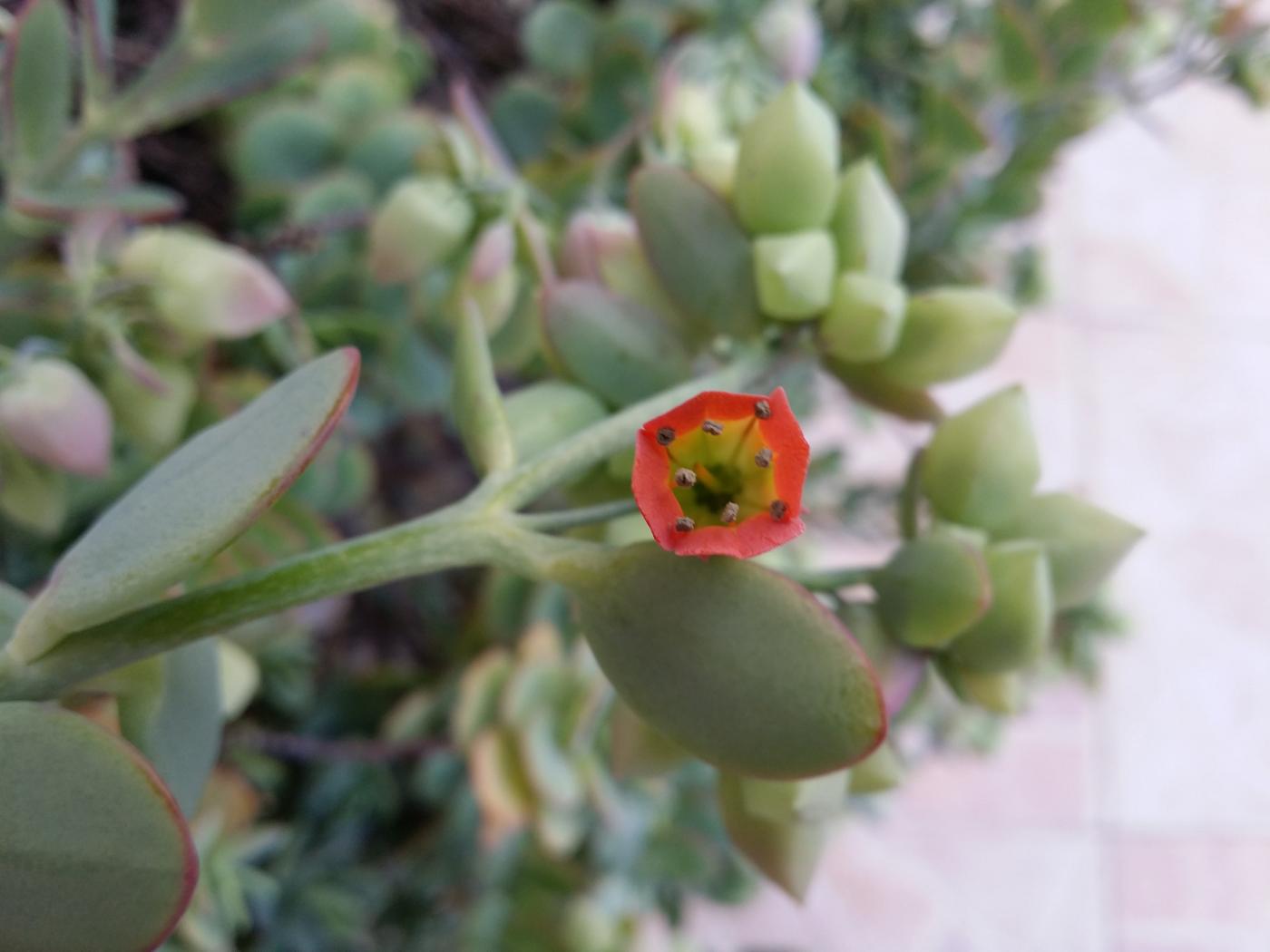
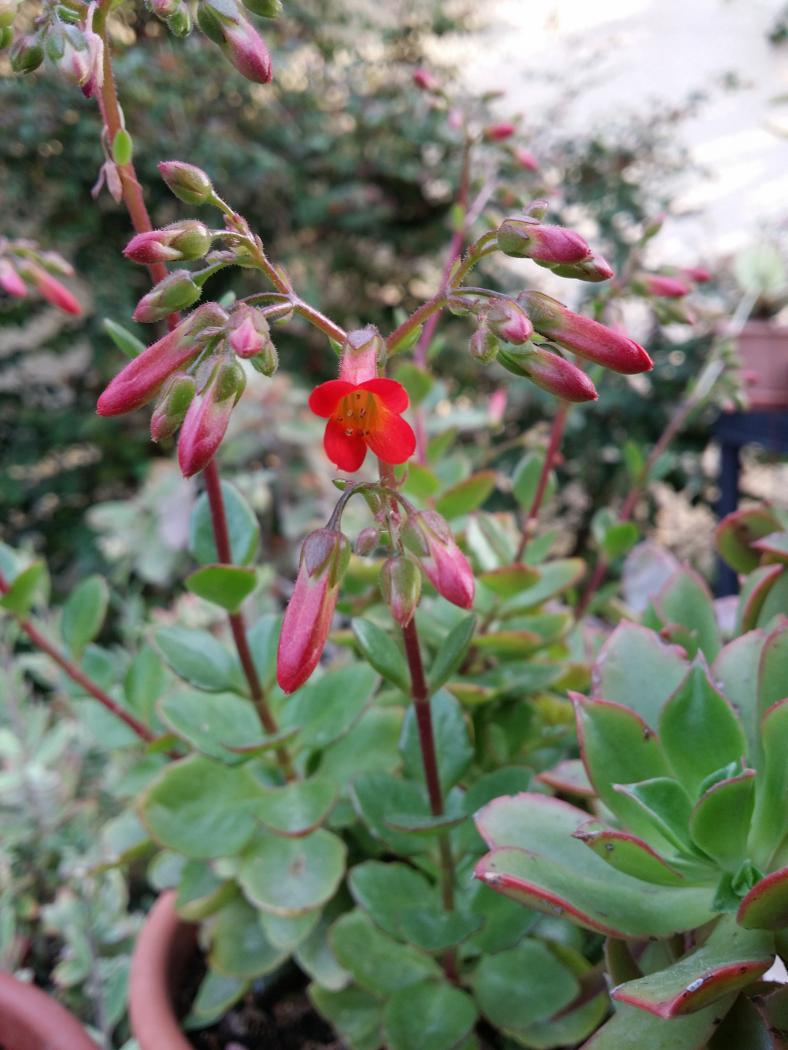
Also, here is yet another "blossfeldiana", a soon to be yellow flowered 'Calendiva':
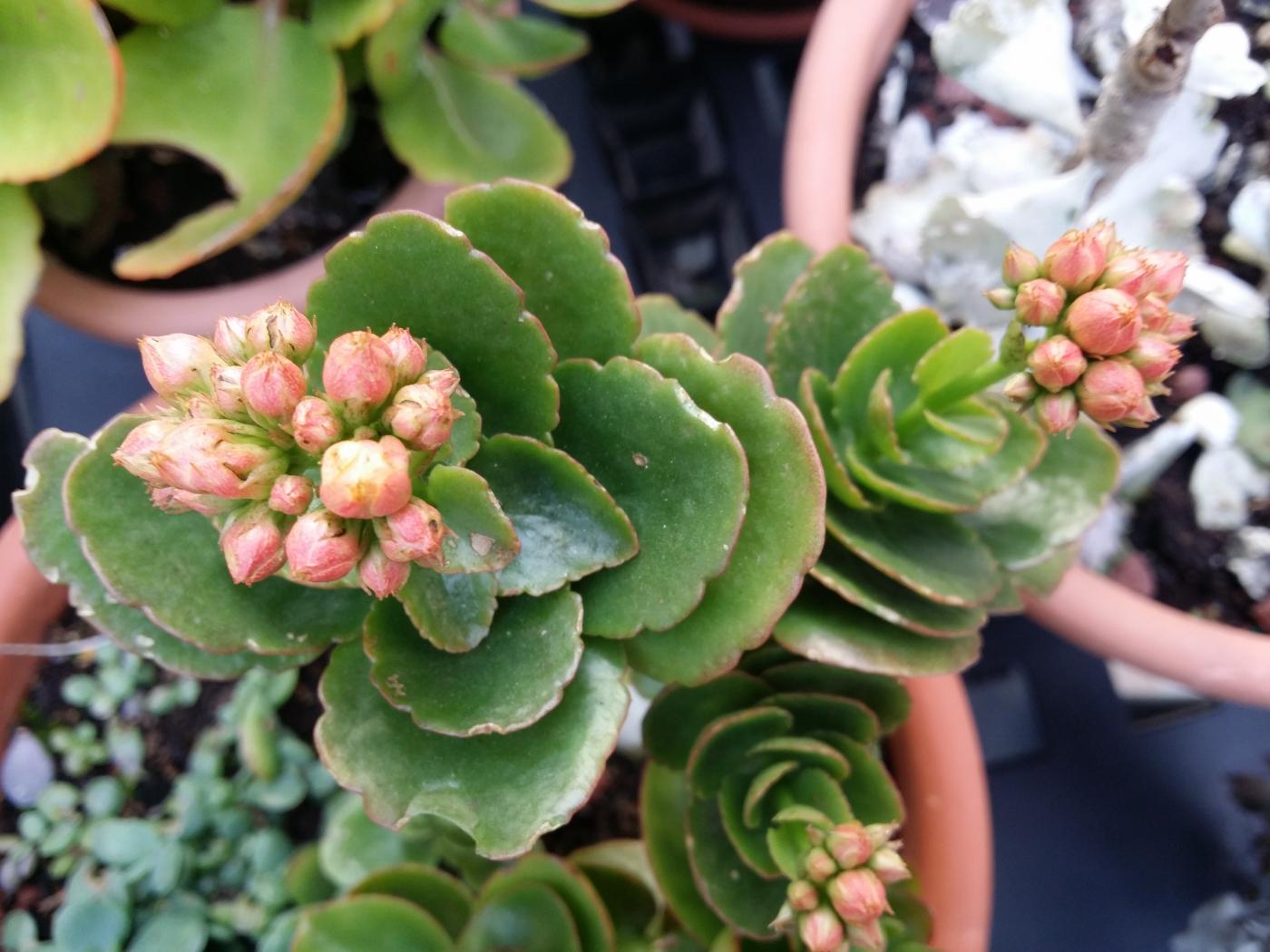
A comparison between the buds of my two clones of K. humilis - the typical humilis has more mature green buds, while the "figuereidoi" has purplish buds, which are clearly younger.
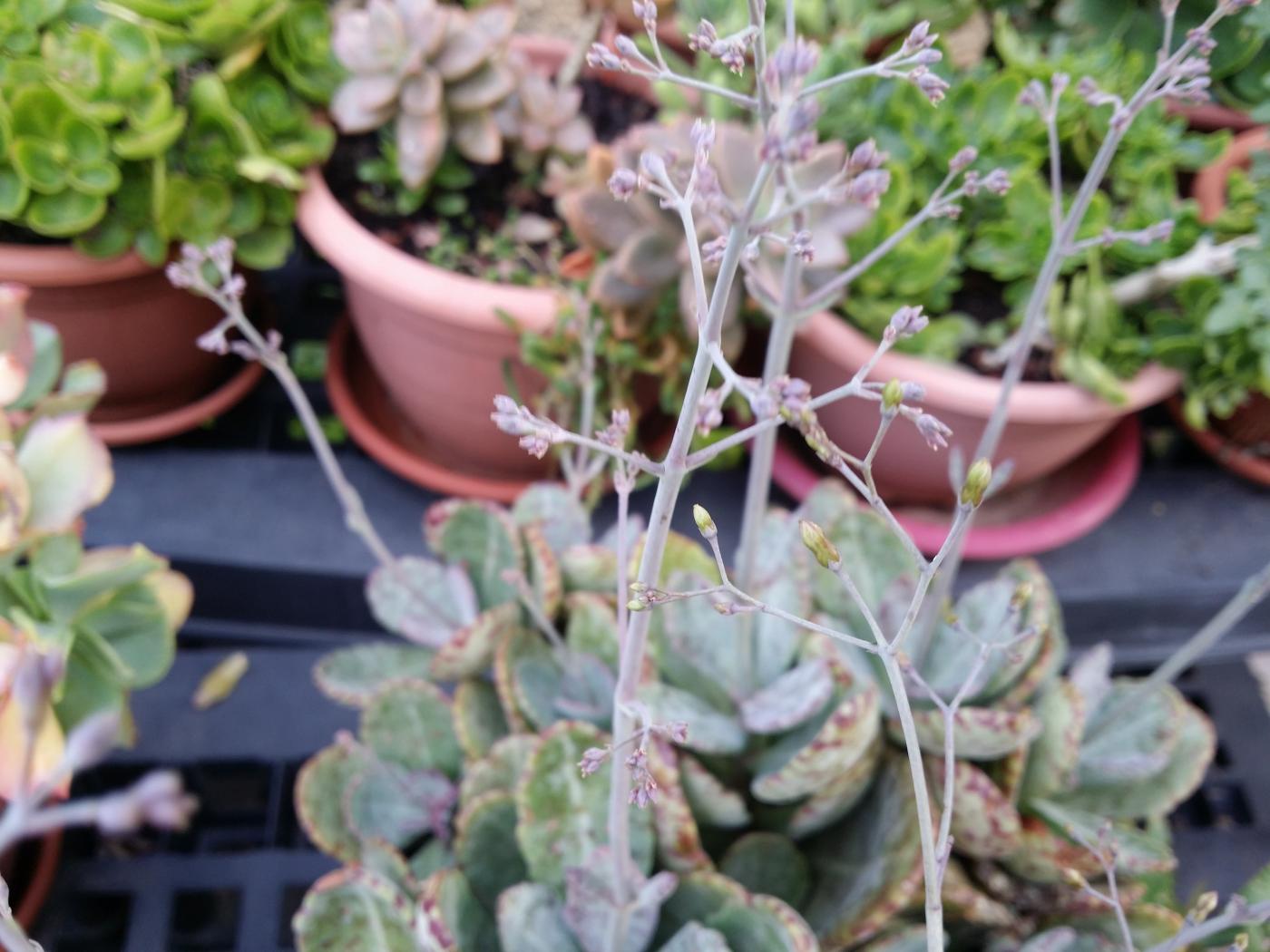
Some of you might remember the possible K. inaurata from Tom's post. My plant was beheaded by the brutal hail a few months ago, I assumed that it won't flower this season. Nevertheless, the new narrow leaves on the plants (the apex, and the body) suggest otherwise!
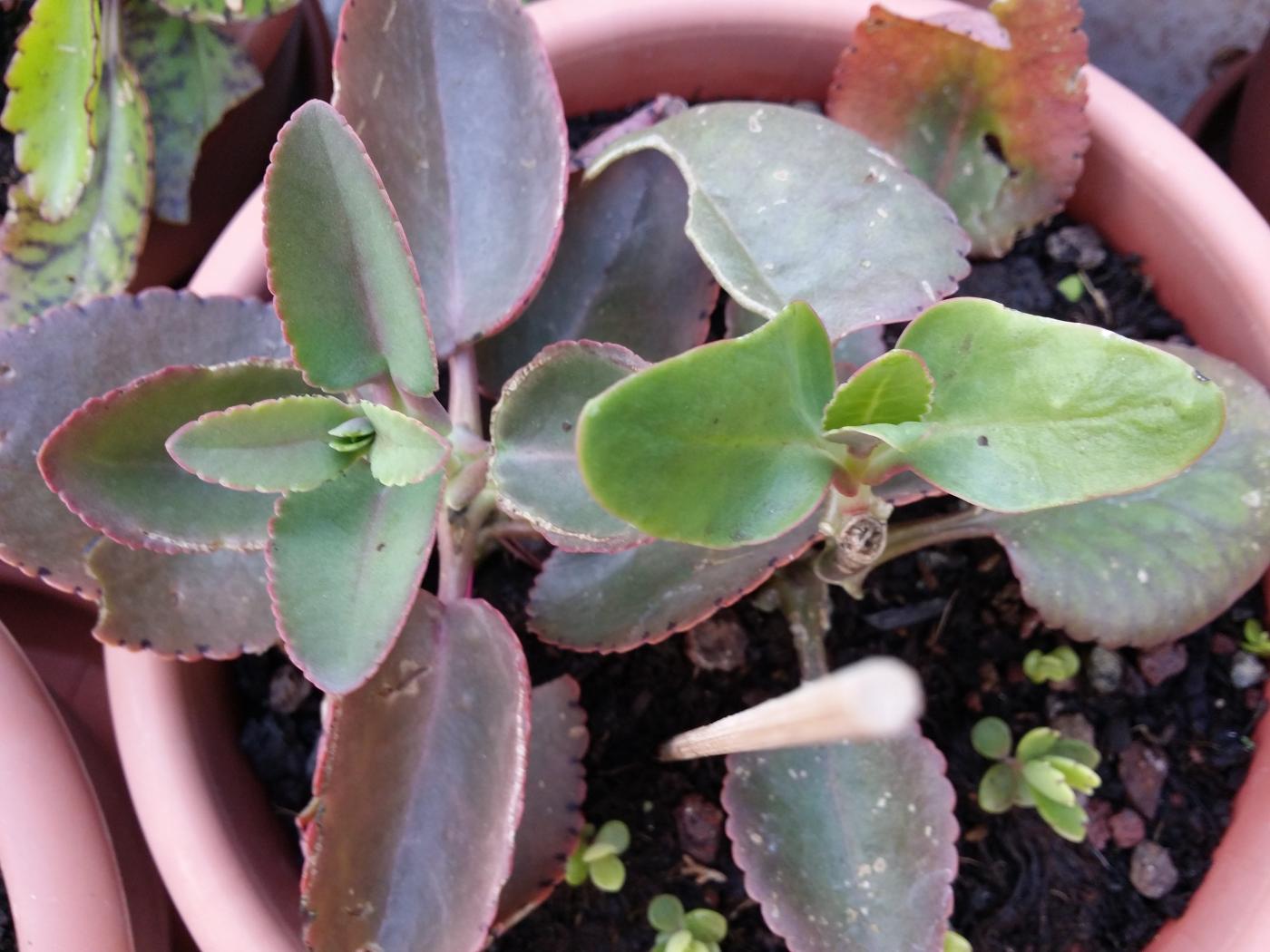
And finally two more photos of K. spathulata var. spathulata in flower:
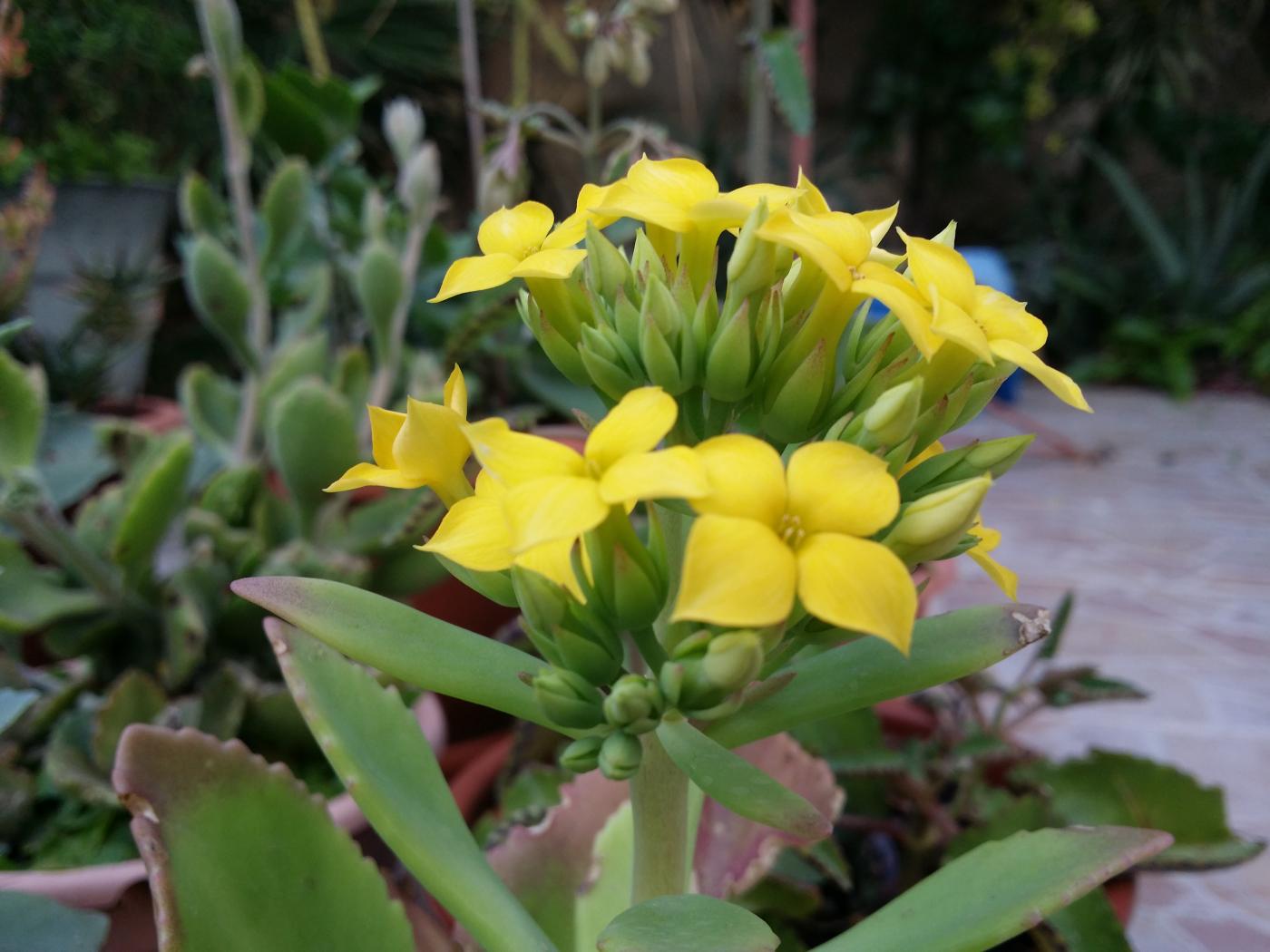
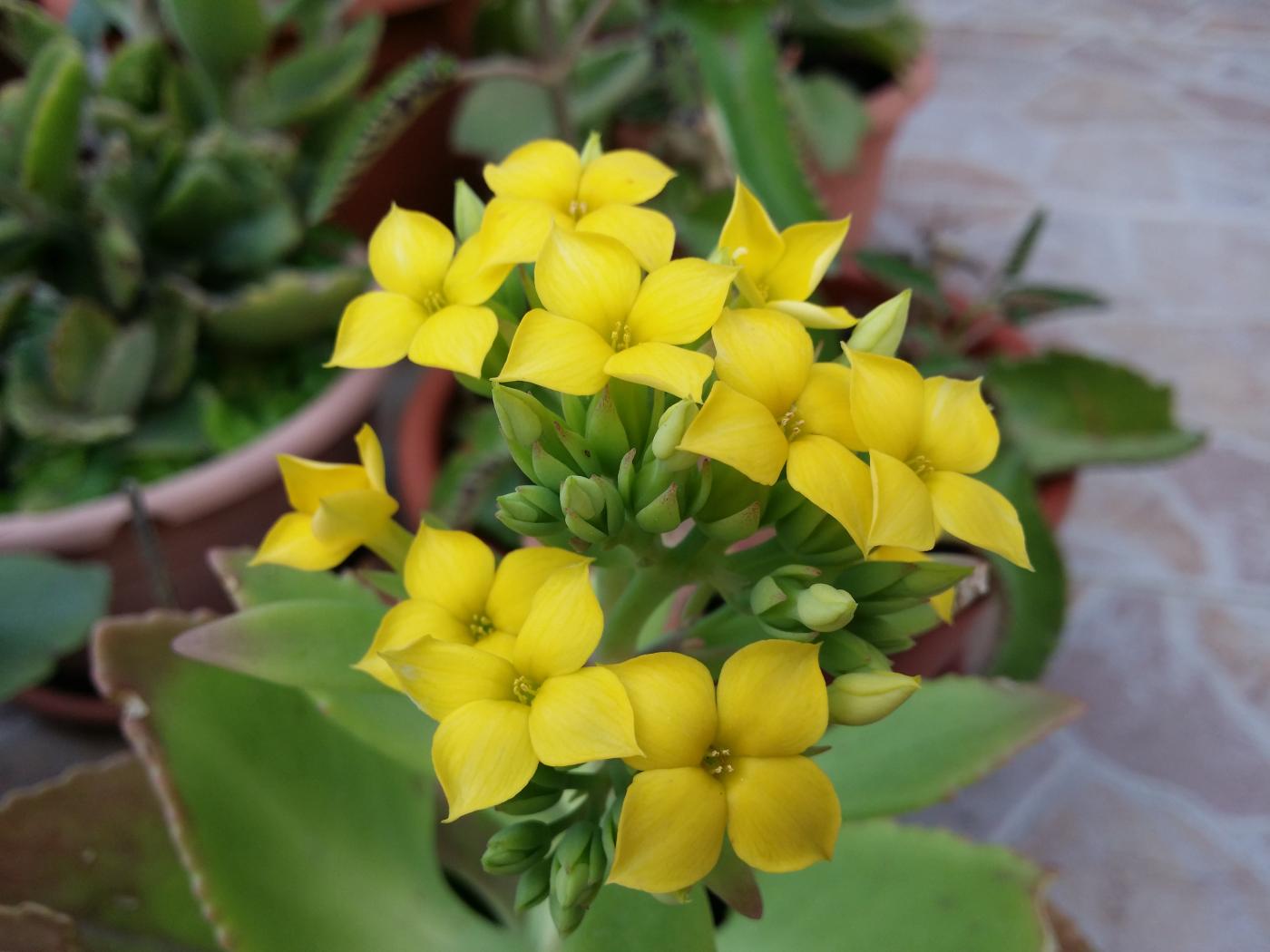
Offline
#37 2014-12-11 18:26:46
- Laurent
- Member

- From: Côte d'Azur
- Registered: 2008-05-04
- Posts: 419
Re: Kalanchoe and others in my collection
Thank you very much for your detailed answer Ronen !
I found a leave of this L. guttatum at the "botanical garden"
Found or borrowed ? ![]()
the two species that rot during the summer were potted in a dense soil, which includes a lot of sand and small rocks. My L. g. however is potted in a gardening mix, with tuff, moss fiders, and soil (no sand), so if you're using sand, a lighter mix with fibers might help...
There is a lot of sand in my soil mix.
It's strange that some plants can look awful when kept in conditions very close to their natural environment. In nature L.g. grows in pure rock ...and looks awful too (the following link leads to a small photo, but I can distinguish the same burnt/necrotic marks on the leaves of the wild plant : http://www.crassulaceae.com/botanik/pfl … M&gnr=1630 )
Offline
#38 2014-12-11 19:27:14
- Ronen
- Member
- Registered: 2014-03-25
- Posts: 49
Re: Kalanchoe and others in my collection
Found or borrowed ?
This one I actually found, a leaf of K. beharensis was "borrowed"... ![]()
It's strange that some plants can look awful when kept in conditions very close to their natural environment. In nature L.g. grows in pure rock ...and looks awful too (the following link leads to a small photo, but I can distinguish the same burnt/necrotic marks on the leaves of the wild plant : http://www.crassulaceae.com/botanik/pfl … M&gnr=1630 )
Thanks for the photo, I've never seen such burns in my collection on any Lenophyllum despite of the intense summer sun. And yes, I agree, some plants seem to become needy in cultivation. Eventually I'll have to re-pot the other two Lenophyllum to the gardening mix...
Offline
#39 2014-12-11 20:52:42
- margrit
- Administrator
- Registered: 2007-09-03
- Posts: 5,388
Re: Kalanchoe and others in my collection
Ronen, how many Kalanchoe tomentosa cultivars do you know ?
Offline
#40 2014-12-11 21:16:46
- Ronen
- Member
- Registered: 2014-03-25
- Posts: 49
Re: Kalanchoe and others in my collection
I have five different cultivars only two of which are named... That's a very specific question, now I'm curious!
I misread the question, sorry... I know: 'Chocolate Soldier', 'European Clone', 'Golden Girl', 'Super Didier', 'Super Duper', 'Super Fuzzy', "var. rauhii" which is probably the same as "var. fievetii", and the variegated form. There are many unnamed forms in cultivation, too.
Last edited by Ronen (2014-12-11 21:29:44)
Offline
#41 2014-12-11 21:40:33
- Ronen
- Member
- Registered: 2014-03-25
- Posts: 49
Re: Kalanchoe and others in my collection
And if one follows Shaw (2008), there are also:
'Dick Wright' - "Narrow lvs, with brown line along each margin"
'Golden Giant' - "Leaf tips brown when mature"
'Hans Britsch' - "Broad lvs, particularly felted and hairy"
'Hispaneola'
'Nigromarginata'
'Pedro Braso'
'Rubra'
'Tsukitofi Nishiki'
'Tukitojinisiki' (the variegated form)
Offline
#42 2014-12-11 22:06:52
- Laurent
- Member

- From: Côte d'Azur
- Registered: 2008-05-04
- Posts: 419
Re: Kalanchoe and others in my collection
There are 2 different variegated forms of K. tomentosa, one with variegated edges and one with variegation in the middle of the leaves.
Offline
#43 2014-12-12 15:36:12
- Ronen
- Member
- Registered: 2014-03-25
- Posts: 49
Re: Kalanchoe and others in my collection
There are 2 different variegated forms of K. tomentosa, one with variegated edges and one with variegation in the middle of the leaves.
This is usually the case, judging by other species with variegated forms (luciae, fedtschenkoi...). But I was referring to the one with variegated edges, have never seen the other one!
Offline
#44 2014-12-13 14:41:49
- Laurent
- Member

- From: Côte d'Azur
- Registered: 2008-05-04
- Posts: 419
Re: Kalanchoe and others in my collection
have never seen the other one!
Internet photo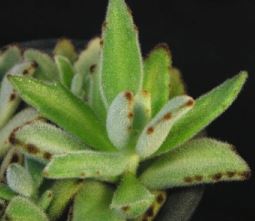
Last edited by Laurent (2014-12-14 10:20:33)
Offline
#45 2014-12-13 17:24:04
- margrit
- Administrator
- Registered: 2007-09-03
- Posts: 5,388
Re: Kalanchoe and others in my collection
Many thanks to both of you !
The name "var. fievetii" is invalid.
Regarding Shaw's list - it is almost impossible to know what these cultivars look like, the descriptions - if at all - are not really helpful.
Could you provide a photo of 'European Clone' and 'Golden Girl', Ronen ?
Thank you very much for your photo, Laurent !
I would like to publish as many correctly identified tomentosa cv's as possible on the ICN site, your help would be much appreciated !
Offline
#46 2014-12-14 08:56:05
- Laurent
- Member

- From: Côte d'Azur
- Registered: 2008-05-04
- Posts: 419
Re: Kalanchoe and others in my collection
Thank you very much for your photo, Laurent !
You're welcome, I just have to precise that it's an internet photo, I don't grow this plant. I just grow a small tomentosa with variegated edges.
Offline
#47 2014-12-14 21:45:00
- margrit
- Administrator
- Registered: 2007-09-03
- Posts: 5,388
Re: Kalanchoe and others in my collection
Ok, so we'll wait for your plant to grow !
Offline
#48 2014-12-15 11:16:12
- Ronen
- Member
- Registered: 2014-03-25
- Posts: 49
Re: Kalanchoe and others in my collection
Laurent, thank you for the photo! Before you wrote that it's from the internet, I thought that you have every variegated crassulaceaen in existence ![]()
Margrit, is the name "var. rauhii" valid (used for the same form)?
Shaw's list also has some obvious mistakes, like "tomentosa cv 'Tomentosa'", a name used by GW for the same plant as cv 'European Clone'...
I don't have 'Golden Girl', but I have two unidentified golden forms (don't know their names, and they become more golden during the summer). I also have two other forms (one thin-leafed with brown margins, and the other 'Super Didier' which is mark-less) but they are too young...
Long leaf golden form: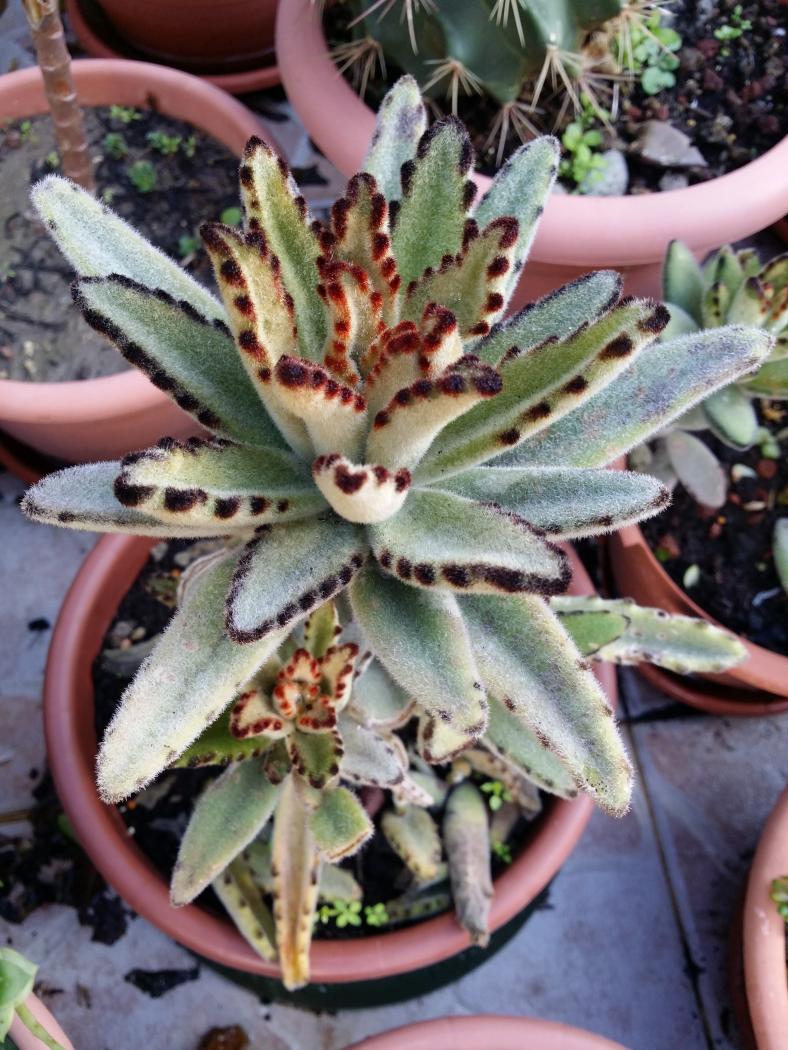
Short leaf golden form: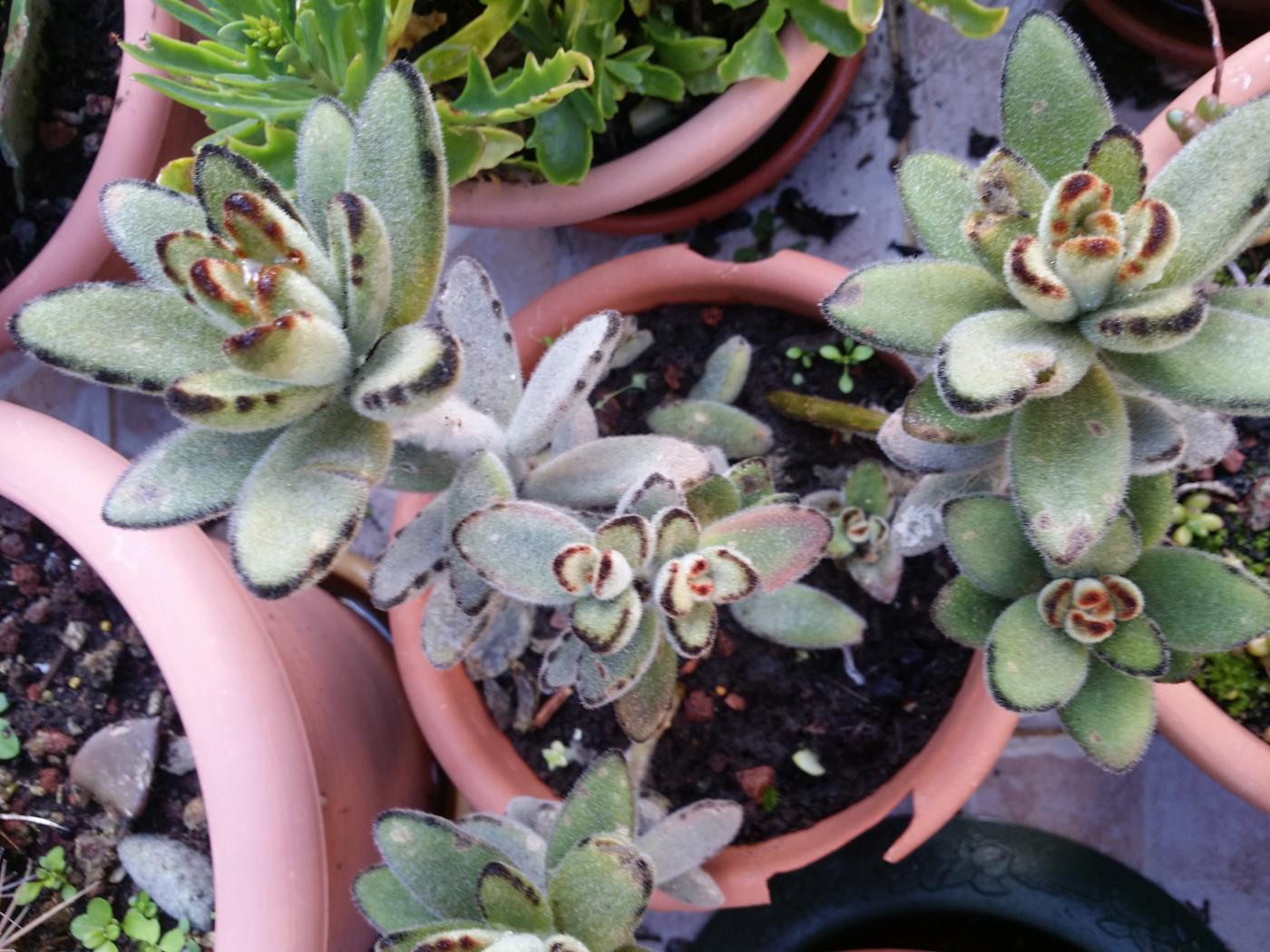
'European Clone', in shade and sun: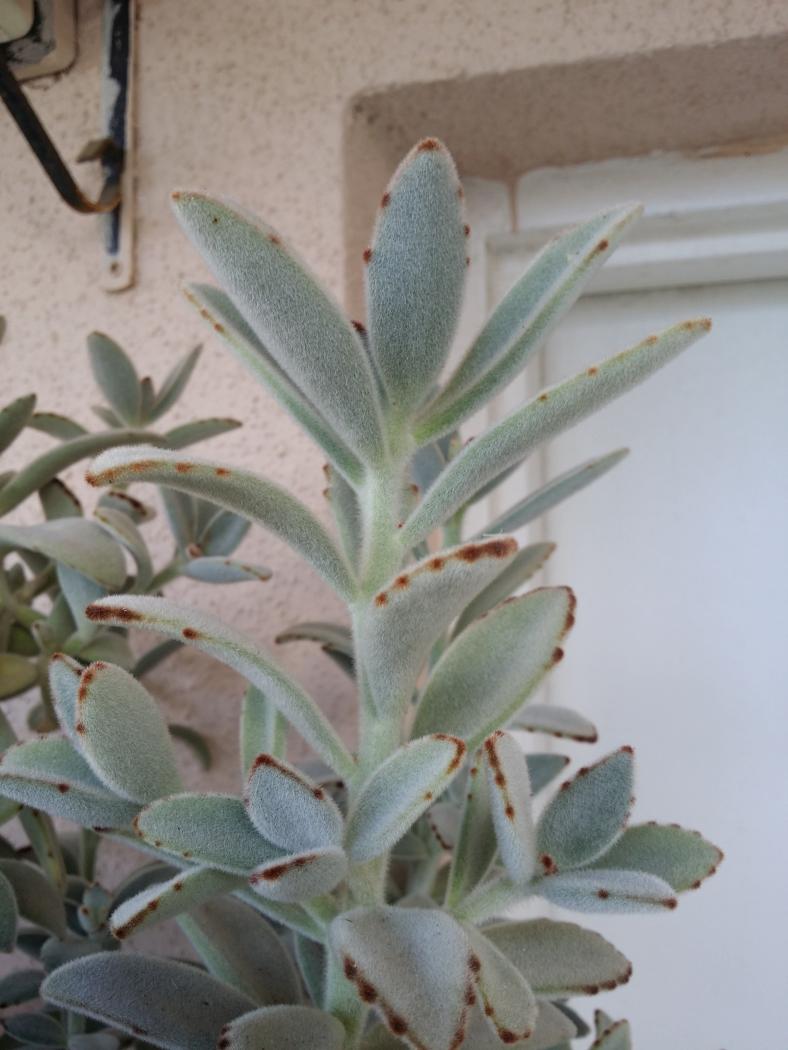
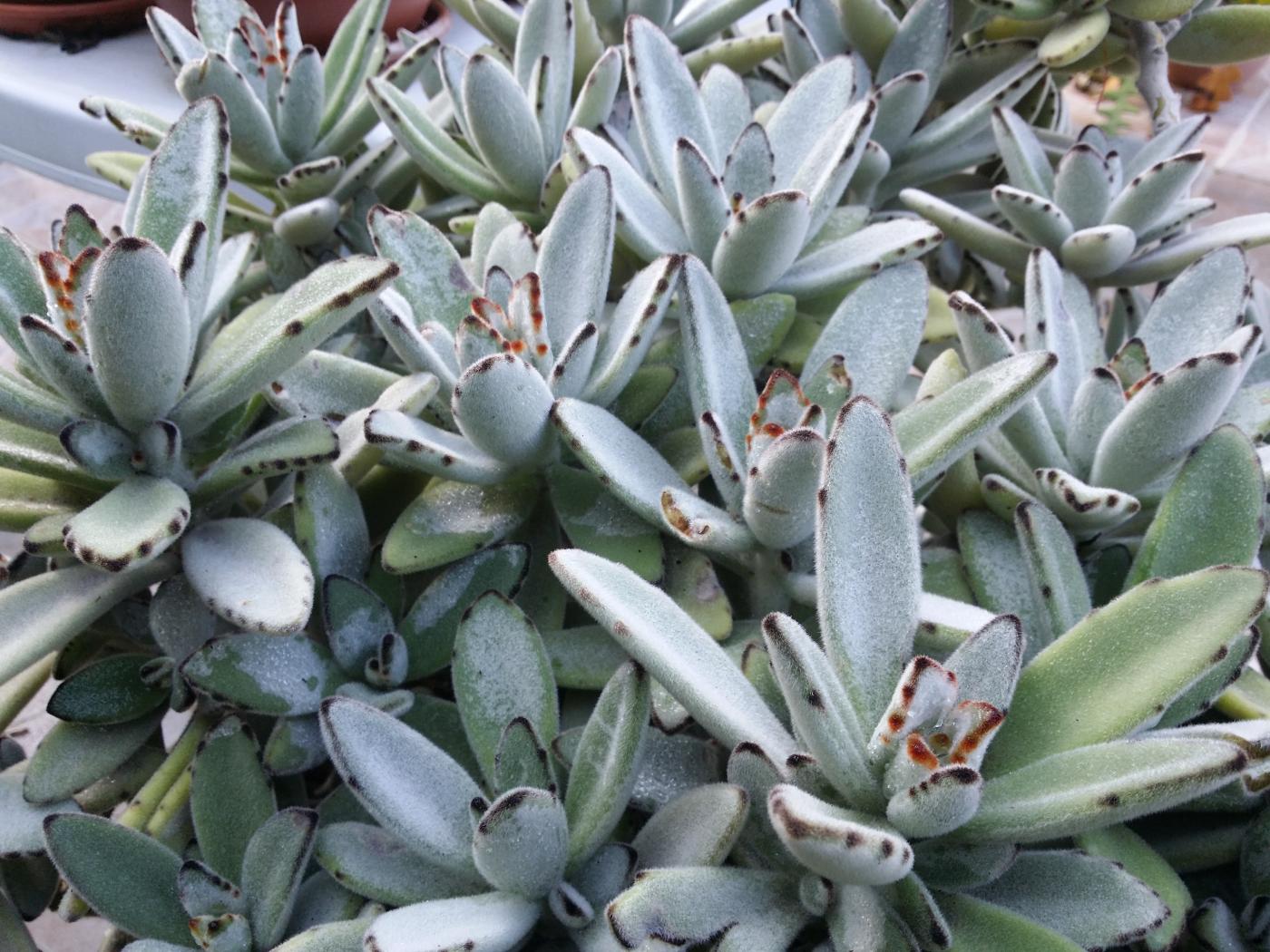
Offline
#49 2014-12-15 15:34:21
- margrit
- Administrator
- Registered: 2007-09-03
- Posts: 5,388
Re: Kalanchoe and others in my collection
The name "Kalanchoe rauhii" - more correctly K. rauhii hort. - is used for a hybrid of K. rosei.
There is no "var. rauhii".
Many thanks for your photos, Ronen. Very interesting to see the variation in K. tomentosa - maybe sometime we will know the possible cv names !
Offline
#50 2014-12-15 16:20:11
- Ronen
- Member
- Registered: 2014-03-25
- Posts: 49
Re: Kalanchoe and others in my collection
The name "Kalanchoe rauhii" - more correctly K. rauhii hort. - is used for a hybrid of K. rosei.
There is no "var. rauhii".
K. rauhii hort. (the K. rosei hybrid) was never officially named either, as far as I know. I was referring to the invalid "var. rauhii" of tomentosa, a name applied in Europe to the same form of long haired tomentosa as "var. fievetii" in the US. Thanks for reinforcing my memory that both vars are invalid!
About the K. rosei hybrid "K. rauhii" (which I have) - I disagree with Shaw (2008) that it is the same plant as Kalanchoe rosei subsp. variifolia (distributed as K. 'Lucky Bells'), based on comparing the former with online photos of the latter (both flowers and leaves differ in some traits). However I can't be sure yet as I don't have subsp./var. variifolia/'Lucky Bells'... (And there is of course x richaudii - yet another K. rosei x delagoensis hybrid, but it is very different from these two)
Many thanks for your photos, Ronen. Very interesting to see the variation in K. tomentosa - maybe sometime we will know the possible cv names !
I hope so too!
Offline